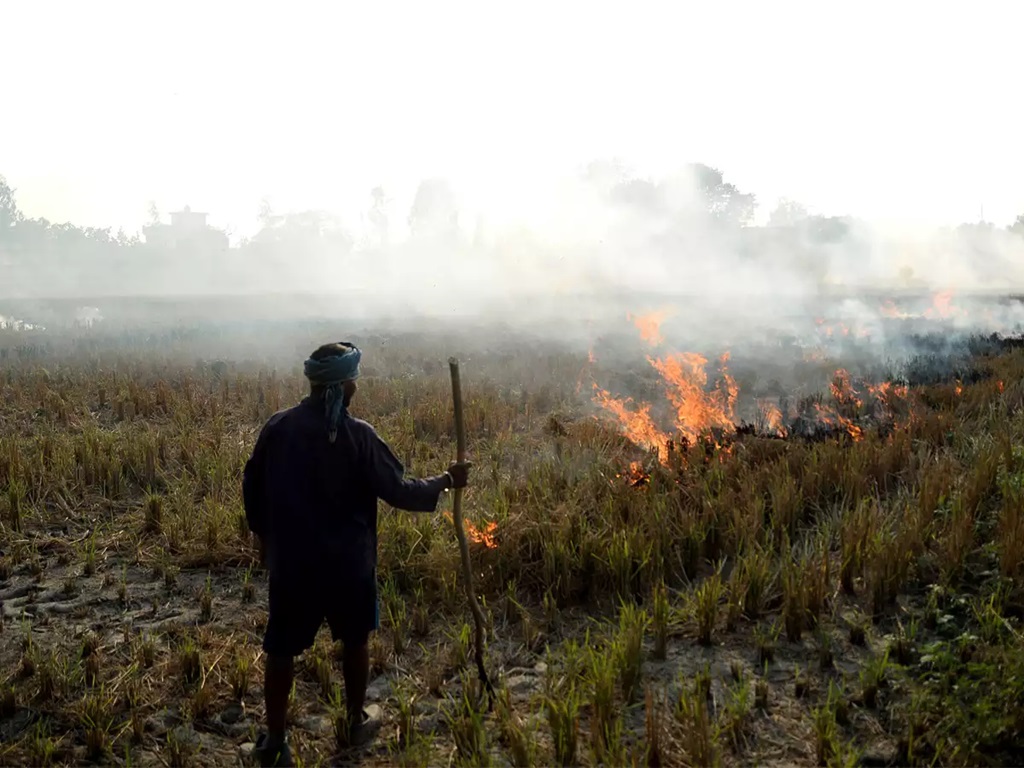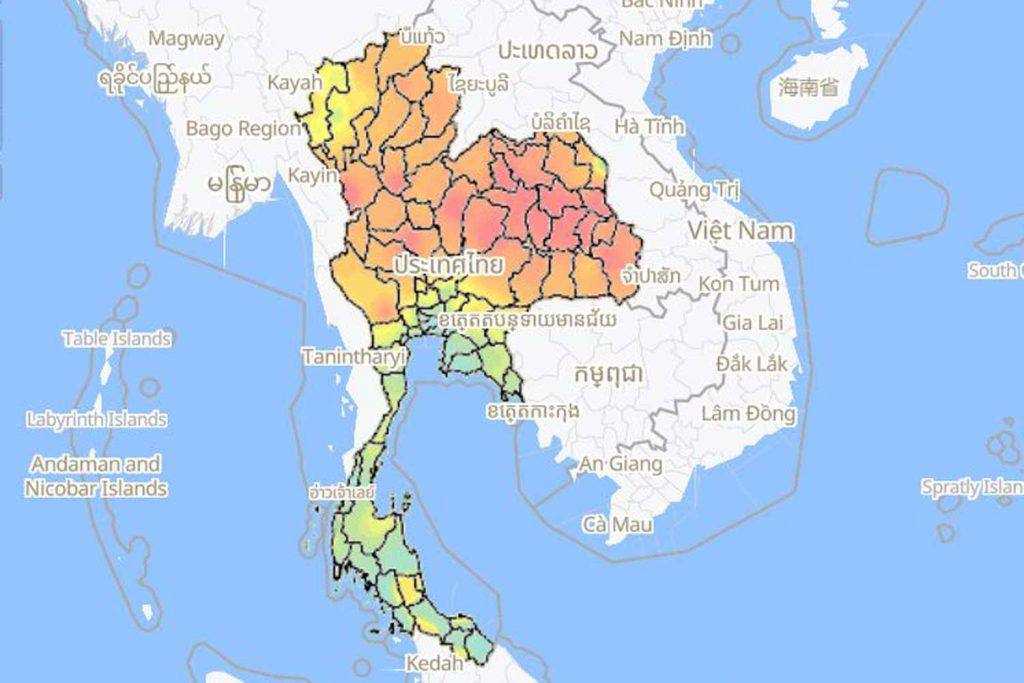The poor PM2.5 air quality in northern Thailand is a major concern. The region already has significant levels of air pollution, which pose serious health concerns to people.
Crop burning and industry pollutants both contribute significantly to the situation. Authorities must take prompt action to solve this environmental risk and protect the well-being of the local community.
Efforts to minimise emissions and improve air quality monitoring are critical steps towards reducing the detrimental impact on human health in the area.
According to the Geo-Informatics and Space Technology Development Agency (Gistda), 48 out of 77 provinces, particularly those in the Northeast, encountered hazardous amounts of ultrafine dust on Thursday morning.
At 10 a.m., Gistda stated that 13 provinces were blanketed by red (seriously dangerous) levels of particulate matter 2.5 micrometres or smaller in diameter (PM2.5), ranging from 75.8 to 97.7 µg/m³ of air over the preceding 24 hours. The government’s safe level for PM2.5 is 37.5 µg/m³, whereas WHO recommendations suggest 25 µg/m³.
The impacted provinces, in descending order, were Roi Et, Kalasin, Maha Sarakham, Nong Bua Lam Phu, Mukdahan, Khon Kaen, Yasothon, Chaiyaphum, Udon Thani, Chai Nat, Phetchabun, Amnat Charoen, and Ubon Ratchathani, with the bulk in the Northeast.
In 35 provinces in Thailand, PM2.5 values ranged from 37.9 to 75.0 µg/m³, making them first hazardous (orange).
Nong Khai, Sukhothai, Nakhon Sawan, Loei, Tak, Sakon Nakhon, Buri Ram, Phitsanulok, Kamphaeng Phet, Uthai Thani, Phayao, Surin, Phichit, Nan, Si Sa Ket, Uttaradit, Phrae, Nakhon Ratchasima, Bueng Kan, Lampang, Chiang Rai, Nakhon Phanom, Lamphun, Sing Buri, Kanchanaburi, Lop Buri, Suphan Buri, Chiang Mai, Ang Thong
Lower Central Plains and Southern provinces experienced moderate to good air quality. Samut Prakan has the best air quality (15.5µg/m³), followed by Bangkok (15.7µg/m³).
On Wednesday, Gistda reported 1,320 hotspots throughout the country, the majority of which (751) were in woods and 241 in farms.
Kanchanaburi had 338 hotspots, followed by Chaiyaphum with 212 and Nakhon Ratchasima with 77.
Myanmar has 1,059 hotspots, Laos has 407, Cambodia has 351, and Vietnam has 215.
Prime Minister Srettha Thavisin had stated that he will call his Cambodian counterpart, Hun Manet, to collaborate on air pollution solutions during the latter’s official visit this week.
According to sources, Cambodian haze has exacerbated dust pollution in several parts of Thailand.
To alleviate the dust, Natural Resources and Environment Minister Patcharawat Wongsuwan stated that he has directed the Pollution Control Department to collaborate with the Department of Royal Rainmaking and Agricultural Aviation to begin rainmaking operations.
Meanwhile, Bangkok Governor Chadchart Sittipunt stated that farmers are among those most blamed for the PM2.5 problem because they engage in a lot of stubble burning and cannot buy devices that allow them to avoid burning activities.







